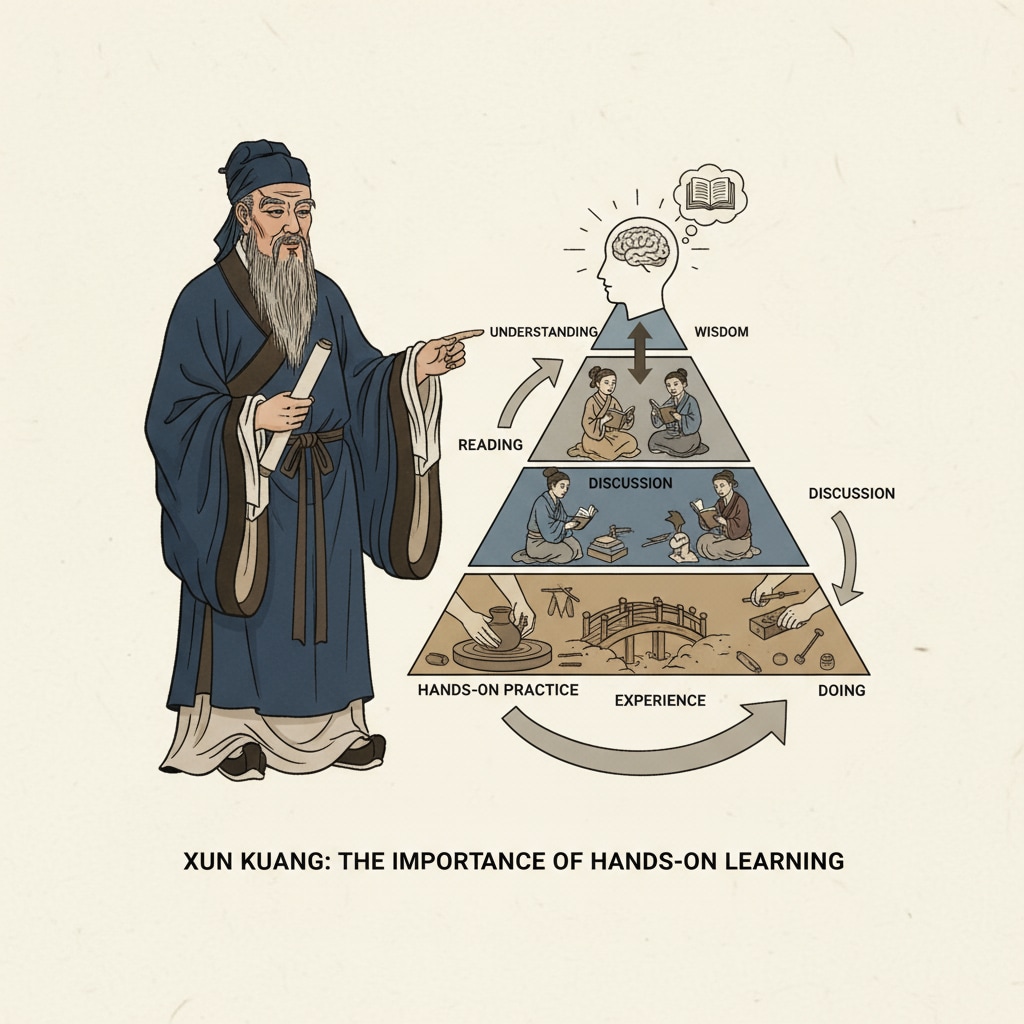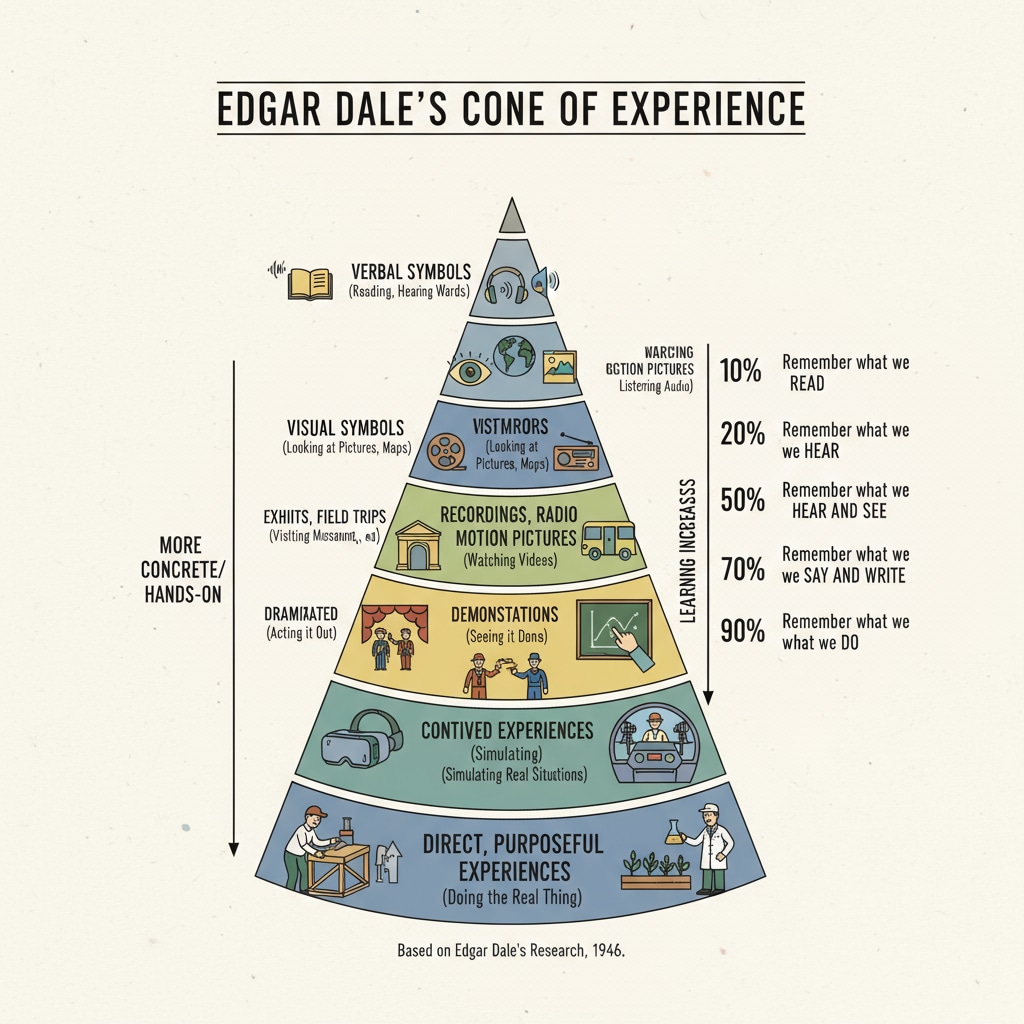Learning theories, cone of experience, hands-on learning, and sensory engagement have been crucial aspects of educational understanding throughout history. The significance of practical learning has been recognized across different eras, from ancient philosophers to modern educational researchers.
The Wisdom of Xun Kuang: Laying the Foundation
Xun Kuang, an ancient Chinese philosopher, once said, “What you have not heard is not as good as what you have heard; what you have heard is not as good as what you have seen; what you have seen is not as good as what you have known; what you have known is not as good as what you have done.” This profound statement emphasizes the hierarchical nature of learning, with hands-on experience being the pinnacle. Xun Kuang believed that true knowledge comes from actively engaging with the world around us. For example, simply reading about a scientific experiment in a book is far less impactful than actually conducting the experiment. Xun Kuang on Wikipedia

The Modern Perspective: Edgar Dale’s Cone of Experience
Fast forward to modern times, Edgar Dale introduced the “Cone of Experience” model. This model visually depicts different levels of learning experiences, from the most abstract at the top to the most concrete and hands-on at the bottom. The cone shows that we remember only about 10% of what we read, but up to 90% of what we do. This clearly indicates that hands-on learning, which involves multiple senses, is much more effective. For instance, learning a new language by having real conversations (active practice) is more beneficial than just reading grammar rules. Cone of Experience on Britannica

The connection between Xun Kuang’s ideas and Dale’s model is striking. Both highlight the superiority of practical, hands-on learning over more passive forms of learning. They emphasize that when we engage multiple senses in the learning process, we create deeper and more lasting memories.
Readability guidance: As seen, we’ve used short paragraphs to clearly convey ideas. Each section presents key points simply. The passive voice is minimally used, and transition words like ‘for example’ and ‘fast forward’ help with flow.


